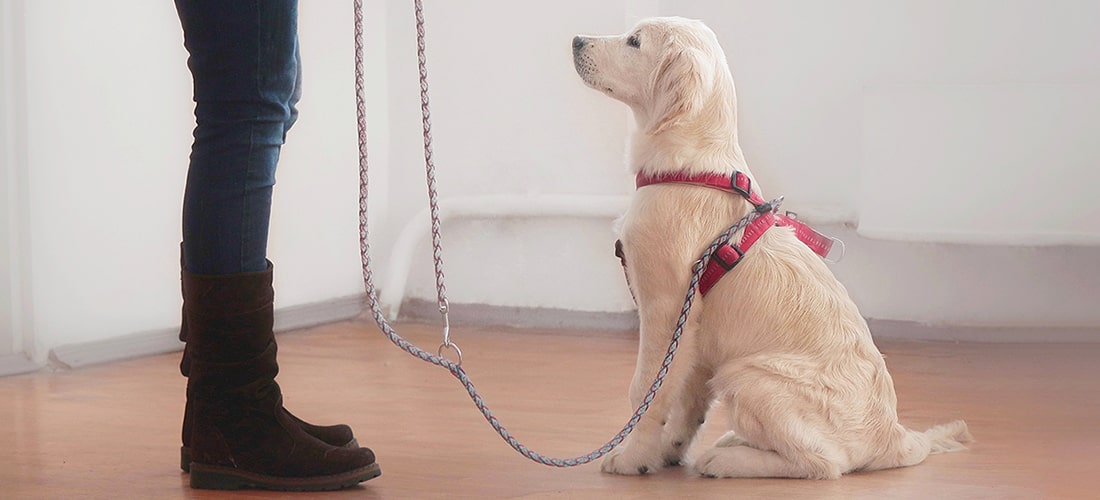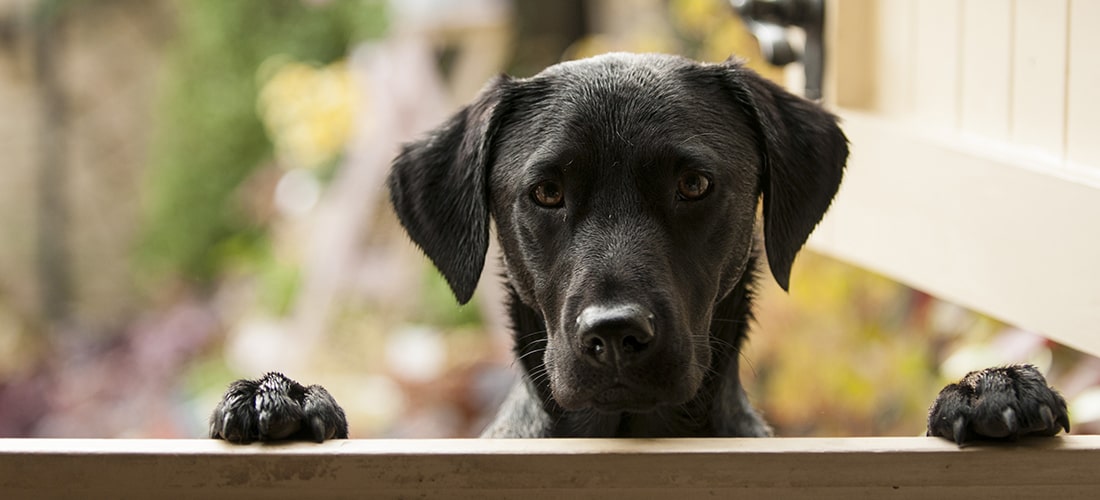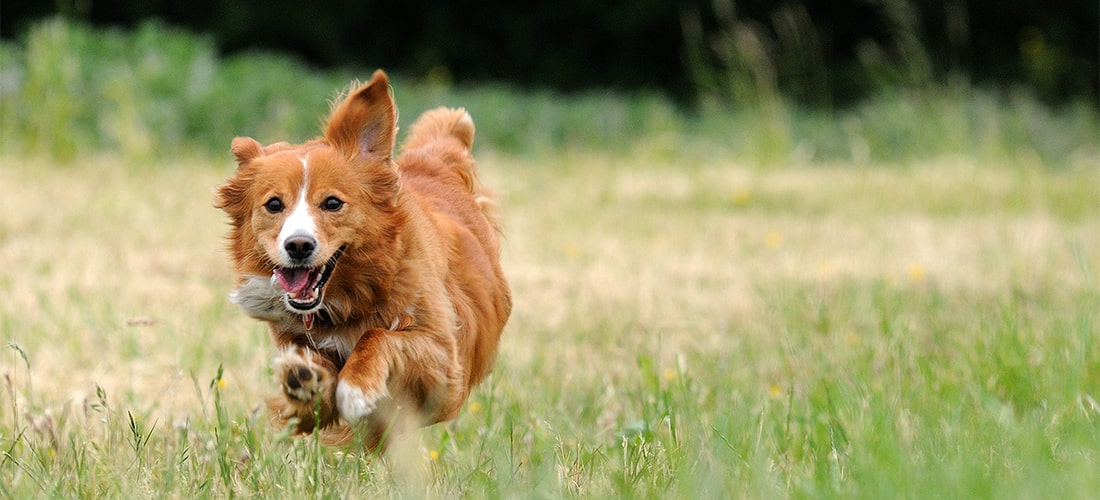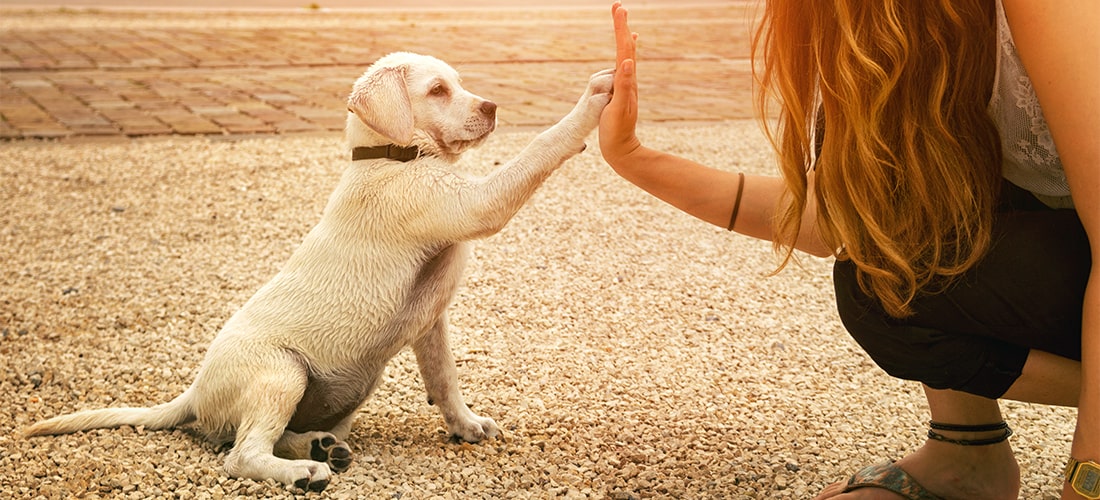Training your puppy basic commands
Most owners dream of their puppy growing into a well-behaved adult dog, but sometimes it can be difficult to know where to start! There are a few basic commands that ideally all owners should teach their dogs. They’re nice and simple and your pup will love to learn them!
Firstly, when you’re training your dog or puppy to do anything, you should always use positive, reward-based training. Dogs respond far better to positive training and are more likely to pick up what you are trying to teach them faster.
It’s also worth noting that telling your dog off rarely helps with training. This is because we often find out our dog has done something they aren’t meant to when it’s already too late. If you tell them off after they’ve already chewed holes in your shoes, they really won’t understand what you’re telling them off for. It’s better to train them that good behaviour gets a reward rather than punishing the ‘bad’ behaviour. Sometimes when they are told off for bad behaviour, puppies can get confused and think you’re praising them. So, it’s best to praise the good behaviour and don’t mention the bad!
Consistency is key with puppies! It’s best for everyone in the family to use the same command words so your puppy doesn’t get confused.
Our vets have put together a plan of the best way to teach your puppy some basic commands to get your puppy started on their training. Remember to keep training sessions fairly short so they don’t get bored and don’t forget the treats and rewards!
Teaching your puppy to sit

Teaching your dog to sit is probably one of the first things owners teach their pup to do after toilet training:
- Firstly, take a treat or toy to get your dog’s attention and hold it in front of their nose.
- Gently take the treat from in front of your dog’s nose to behind their head, taking the treat over the top of their head.
- This should get your dog to sit. Don’t push their bottom down but you can gently place your hand on their back and say ‘sit’ as they move into a sitting position – just try again if they don’t get it first time.
- As soon as their bottom hits the floor, make sure you praise your puppy and give them their reward straight away. That way they will associate the reward with sitting.
Gradually, your dog should learn the command and you’ll be able to phase treats out.
Teaching your puppy 'off'

Whether you want to stop your pup going on the sofa, or they keep trying to put their paws on the table, ‘off’ is a useful command for your dog to learn:
- Firstly, if your dog is jumping up because there’s something they want on a table or counter, remove the item so they aren’t tempted.
- Don’t shout at them for jumping up as they could see any attention as praise.
- When they jump up on something you don’t want them to, use a treat or toy to get their attention.
- Once all four paws are safely back on the ground, give them lots of praise and their reward.
- Once you’ve done this a few times, start to add the command ‘off’ when you are luring them down with their reward. Remember to only give them their reward once all four paws are on the ground.
- Eventually you can start to just use the command ‘off’ when your pup jumps up on something they’re not supposed to. If they don’t respond the first few times go back a step.
- You can start to phase treats out once your dog is consistently responding to the command ‘off’.
Teaching your puppy to come when called

Recall training is super important for dog owners, especially if you want to let your dog off-lead anywhere:
- Make sure you have your dog’s favourite reward for this. You should practice recall training somewhere quiet your dog won’t get distracted at first, so they get used to the command.
- Start in a secure area. Make sure your dog knows you have their favourite reward but isn’t hanging around you for it!
- Walk away from your dog, then say their name and say ‘come’. Try to make their treat obvious at this point!
- It will help to get on their level. Always use a positive tone so they know coming to you when called will be a good thing.
- Reward them when they come to you and give them lots of praise.
- Keep practicing this somewhere quiet and secure. When they’re consistently responding to ‘come’, practice in a quiet public place like a park (make sure this is secure, too!).
- At first, start just a few feet apart and gradually increase the distance as your puppy improves.
It may take some time and patience, but your dog will eventually come to you every time they are called. Some owners prefer to use a long, loose lead out in public for recall training just in case!
Other training

These are some basic commands you can teach your puppy in short sessions. We also have some more in-depth advice about other aspects of training:
- How to toilet train your dog
- Training your dog not to pull on the lead
- Training your dog not to chew
- Clicker training.
Remember to only use reward-based training and take your puppy to accredited training classes if you need some help.
Puppy FAQs
Got some questions about your new puppy? You're not alone! Take a look at some puppy FAQs.

